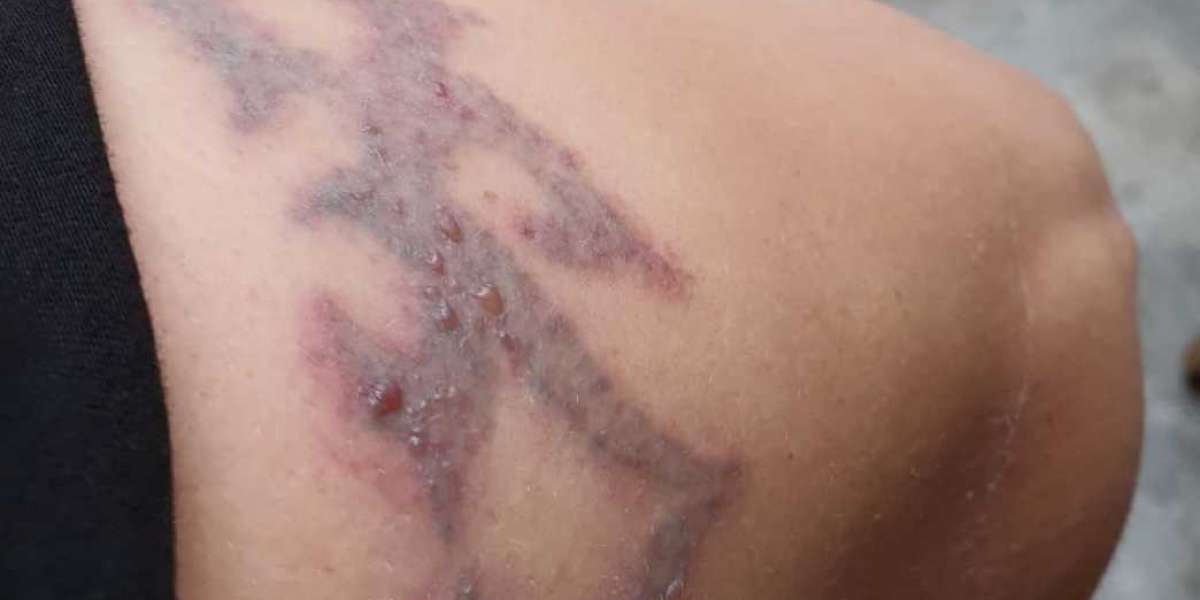Laser tattoo removal is a gradual process that involves breaking down the ink particles in your skin using concentrated light beams. While it's generally safe, your skin undergoes significant stress during each session, which may cause temporary side effects. These are part of the body's natural healing response, but it's essential to recognize what is normal and what could be a sign of injury. Most reactions like redness, swelling, and scabbing are expected, but understanding when these signs go beyond normal healing is key to proper care.
Common Signs of Minor Injury:
Signs of injury after laser tattoo removal (علامات الإصابة بعد إزالة الوشم بالليزر), your skin might exhibit several symptoms that are typically part of the healing cycle. Redness and swelling are among the most common and usually subside within a few days. Scabbing or crusting may develop, which is your skin’s way of forming a protective layer over the healing site. Mild bruising can also occur, especially in sensitive areas. These symptoms are not cause for concern unless they worsen or persist longer than expected. Being aware of these normal reactions helps you stay calm and focused on recovery.
Warning Signs of Complications:
While most side effects are minor and temporary, it’s important to be alert to signs of potential injury or infection. Intense pain that worsens over time, excessive swelling, spreading redness, foul-smelling discharge, or pus may indicate infection. Blisters are common but should be monitored closely—if they become large, painful, or filled with yellow fluid, medical attention may be necessary. Other signs to watch for include fever, chills, and increased sensitivity around the treated area. These symptoms suggest your body may be reacting abnormally to the procedure.
Skin Discoloration and Texture Changes:
One of the potential signs of post-treatment injury is a noticeable change in skin color. Hyperpigmentation (darkening of the skin) or hypopigmentation (lightening of the skin) may occur, particularly in people with darker skin tones. These conditions often resolve over time but can be distressing. In some cases, the skin might develop a shiny, tight appearance, which could suggest scar tissue formation. Early identification and consistent care can help reduce the risk of long-term changes in skin texture or color.
Tips for Proper Aftercare:
Proper aftercare is crucial for preventing injuries and promoting faster healing. Keep the treated area clean and dry for the first 24-48 hours. Avoid touching, scratching, or picking at scabs and blisters to minimize scarring. Applying a thin layer of antibiotic ointment can help protect the skin, while a non-stick bandage may prevent irritation. It's best to wear loose, breathable clothing over the area to reduce friction. Avoid exposing the treated site to direct sunlight and always use sunscreen once the skin has healed to prevent pigmentation issues.
Activities to Avoid During Recovery:
Certain activities can slow down healing or increase the risk of injury after laser tattoo removal. It's advisable to avoid swimming pools, hot tubs, or saunas during the first few days, as these can introduce bacteria into the healing skin. Strenuous exercise that causes excessive sweating or friction near the treated area should also be avoided initially. Using harsh skincare products, exfoliants, or chemical peels on the area is not recommended until the skin has fully recovered. Giving your body enough rest and hydration helps support the natural healing process.
Long-Term Skin Care Strategies:
Even after the skin appears healed, it’s essential to maintain a skincare routine that supports long-term health. Moisturizing the area regularly with a gentle, fragrance-free lotion can improve elasticity and prevent dryness. Protecting the area from sun exposure for several months after treatment helps reduce the risk of pigmentation issues and scarring. Monitoring your skin for any unusual changes or lingering signs of injury is important. If you're undergoing multiple sessions, maintaining good skin health between treatments can improve outcomes and minimize side effects.
Conclusion:
Laser tattoo removal is an effective method for eliminating unwanted ink, but it does place stress on the skin, leading to potential signs of injury. Recognizing the difference between normal healing and symptoms of complications is essential to ensure proper recovery. By understanding common side effects, watching for warning signs, and following recommended aftercare, you can significantly reduce the risk of injury and support the healing process. Long-term skin care and cautious habits post-treatment will not only protect your skin but also enhance the overall results of the removal. Patience, awareness, and care are the keys to a smooth recovery journey.











